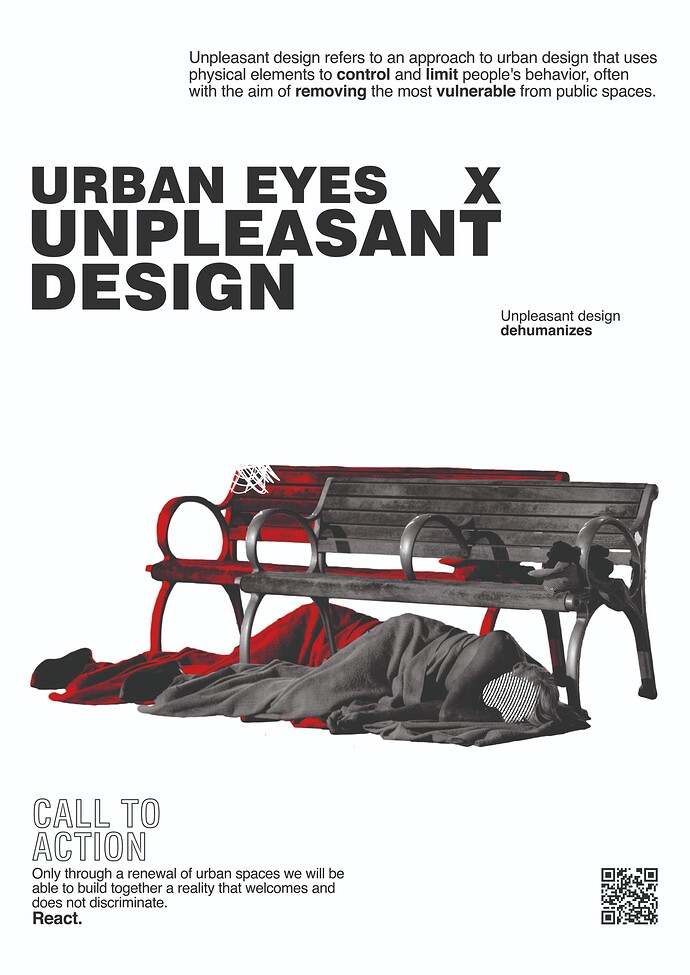Hi,
I’ve tried to make this poster as an exercise, but I’m not sure if it works. I would be really grateful to any of you who could help me, thanks.
This is a fake brief from chatgpt:
Brief for the Creation of a Poster on Hostile Architecture
Client: UrbanEyes - Association for Improving Urban Livability
Context: UrbanEyes is a non-profit organization dedicated to raising public awareness on urban livability and architectural issues. One of our recent campaigns focuses on hostile architecture, a phenomenon increasingly present in modern cities. Hostile architecture refers to design and architectural solutions that discourage undesirable behaviors, such as loitering, but often end up further excluding and marginalizing vulnerable people, such as the homeless.
Objective: Create an informative and awareness-raising poster that highlights the phenomenon of hostile architecture. The poster should be visually impactful, informative, and capable of stimulating public reflection and debate. The goal is to educate the public on what hostile architecture is, how to recognize it, and its social implications.
Target Audience: The poster is aimed at a broad audience, including ordinary citizens, students, architects, urban planners, policymakers, and social activists. It should be understandable and engaging for people with varying levels of knowledge on the subject.
Key Content:
- Definition of Hostile Architecture: A brief description of the concept and its stated objectives.
- Visual Examples: Images or illustrations of concrete examples of hostile architecture (e.g., benches with dividers, anti-loitering spikes, sloped surfaces under bridges).
- Social Implications: Text explaining how these solutions negatively affect vulnerable people and social cohesion.
- Positive Alternatives: A brief section proposing more inclusive and humane design solutions.
- Call to Action: An invitation for the public to reflect on the topic and participate in public discussions or support initiatives for a more inclusive city.
Style and Tone:
- Visual: Modern, clean, and professional, with a balanced use of images and text.
- Color: Use a color palette that draws attention while maintaining a serious and reflective tone.
- Typography: Readable and modern fonts, with emphasis on titles and key sections.
Technical Specifications:
- Poster Size: A2 (420 x 594 mm)
- File Format: High-resolution PDF, minimum 300 dpi
- Color: CMYK for printing
Timeline:
- Draft Deadline: August 15, 2024
- Client Feedback: August 20, 2024
- Final Delivery: August 30, 2024
Budget: The budget for this project is €1,000, inclusive of all revisions and usage rights.
Additional Notes:
- The poster will be displayed in public spaces, schools, universities, and distributed via digital channels.
- Consider including a QR code linking to a webpage with further information and resources.
Contact:
- Contact Person: *****
- Email: *****
- Phone: *****
We are available for further clarifications and are excited to collaborate with you on this important project.

